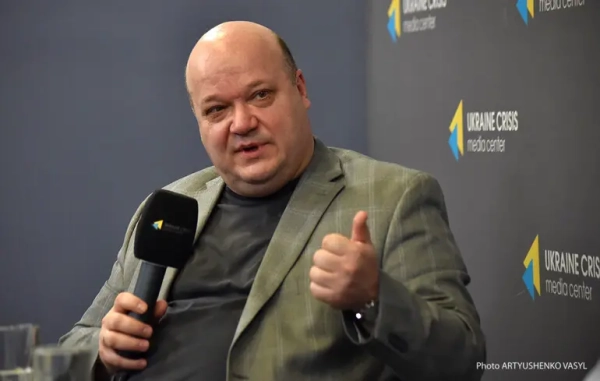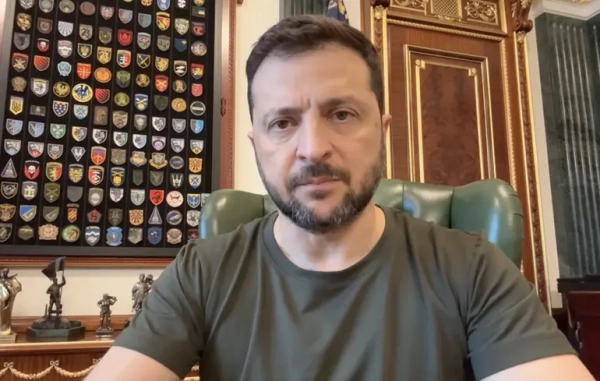Alec Baldwin faces an involuntary manslaughter charge for the 2021 shooting death of Halyna Hutchins on the chaotic movie set.

Rust’s chaotic production resulted in the death of a cinematographer when Alec Baldwin’s prop gun accidentally discharged. Angela Weiss/AFP via Getty Images Aja Romano writes about pop culture, media, and ethics. Before joining Vox in 2016, they were a staff reporter at the Daily Dot. A 2019 fellow of the National Critics Institute, they’re considered an authority on fandom, the internet, and the culture wars.
By all accounts, it was an accident everyone saw coming, but the questions and chaos surrounding the death of cinematographer Halyna Hutchins have only grown more numerous in the two years since the fatal incident. Last year, criminal charges against Alec Baldwin for the incident were dropped — but a subsequent statement from the prosecutor threatening additional charges left things even more disconcertingly unsettled. Now, the case seems to be back on again after a grand jury reportedly indicted Baldwin Friday on the original two counts of involuntary manslaughter.
Santa Fe District Attorney Mary Carmack-Altwies announced exactly a year ago that the county would bring charges against Alec Baldwin for the cinematographer’s death. Hutchins was killed in October 2021 on a ranch near Santa Fe, after a prop gun Baldwin was holding accidentally discharged while filming the movie Rust. The film’s director, Joel Souza, was also non-fatally injured in the shooting.
Baldwin was formally charged, but prosecutors soon dropped all charges against him. Yet the charges were dropped without prejudice, meaning prosecutors could still choose to refile them or file different charges against Baldwin in the future. Prosecutors claimed to have dropped and subsequently refiled the charges only because they had new forensic evidence regarding the gun Baldwin fired — a Pietta replica of a .45 Long Colt that seems to be the other central figure in this case. Baldwin has long maintained that he never pulled the trigger, but a new forensics report published in August claimed, in an apparent contradiction of previous tests on the prop, that he must have.
On the strength of that new report, the prosecution appears to be reviving the case against Baldwin. He can only be convicted of one of the two different counts of involuntary manslaughter against him, but faces up to 18 months in prison. Baldwin’s lawyers responded by saying, “We look forward to our day in court.”
Armorer Hannah Gutierrez-Reed, the chief weapons handler for the film, was also charged in January 2023 alongside Baldwin; charges against her have remained in place, even though she spent the weeks leading up to the shooting warning her supervisors of unsafe conditions on set while seeking more opportunities to attend to gun safety. She pleaded not guilty and awaits trial in February.
The back-and-forth prosecution follows an already lengthy investigation into the incident by the Santa Fe sheriff’s office that concluded in October 2022. The report, which was crucial in prosecutors’ initial decision to file charges, focused on lapses in safety procedures on the film’s highly criticized set, though it failed to determine the most important factor — exactly how loaded guns with live ammunition made it onto the set. This issue remains unsettled despite numerous investigations and lawsuits surrounding the production environment on the Rust set, alongside conflicting views of the accident itself.
The assignment of blame has also proved elusive on a set plagued by claims of labor exploitation, rushed work, unsafe conditions, and “very fast and loose” handling of weaponry.
At the center of the case are two unsolvable mysteries
At the center of the case against Baldwin and Gutierrez-Reed are two questions: Did Baldwin pull the trigger? And how did live rounds get on set to begin with?
No one disputes the broad facts of what happened on October 21, 2021. Prior to the filming of the scene, Gutierrez-Reed, a props assistant who doubled as the on-set armorer, examined the gun. She looked inside the barrel, spun the barrel, visually confirmed what she believed were dummy bullets — fake bullets containing no live ammunition — and handed the gun over to assistant director and production safety coordinator David Halls to take to the filming location. (Halls avoided facing trial by pleading guilty to negligent use of a deadly weapon.)
Safety protocol calls for Gutierrez-Reed to have checked all the bullets in front of Baldwin herself — and she claims to have intended to do so, asking Halls to let her know if Baldwin required her to come down to the filming location and directly examine the gun. But according to a lawsuit later filed by Gutierrez-Reed, the gun wasn’t actually intended to be used in that afternoon’s filming, and Halls was just “sitting in” with it, keeping it in case it became necessary for later use — which it did when Baldwin decided to rehearse an unscheduled scene that required the gun.
At that point, Halls should have summoned Gutierrez-Reed to come back and further examine the bullets inside the gun. Instead, he yelled, “Cold gun!” — “cold” meaning a gun that was not loaded with live ammunition — to warn the crew that a gun was about to be discharged. Then he handed it over to Baldwin. While Baldwin was following Hutchins’s instructions to aim the gun toward the camera, the gun discharged, striking both her and Souza.
Baldwin has always been adamant that he never pulled the trigger. He has explained that he would never pull the trigger on a prop gun while it was pointed at another human (though safety protocols forbid pointing any prop gun at any human for any reason), and that the gun discharged independently.
He instead claims he cocked the gun — that is, he pulled the hammer back — and that when he released it, the gun suddenly discharged on its own. Later, FBI forensics reports on the same gun apparently contradicted Baldwin, suggesting that this particular prop gun could only be discharged by pulling the trigger after the gun was cocked or partially cocked.
Yet those reports, according to Baldwin’s attorney, downplayed the fact that FBI investigators tried repeatedly to discharge it and were unable to do so, either by pulling the trigger or through any other means. “The gun fired in testing only one time — without having to pull the trigger — when the hammer was pulled back and the gun broke in two different places,” attorney Luke Nikas stated. “The FBI was unable to fire the gun in any prior test, even when pulling the trigger, because it was in such poor condition.”
The new forensics report seems highly contestable from the outset because, again, the gun fell apart after the one and only time the FBI was able to get it to fire. In order to conduct testing, the new forensics expert, Lucien Haag, had to replace the broken gun parts, so his analysis was not based on the gun’s exact condition at the time of the shooting.
Haag’s testing found that the gun, with replaced parts, was unable to discharge without at least two pounds of pressure being exerted to pull the trigger. He also cited the seemingly careless way Baldwin tended to place his fingers near the triggers of guns as evidence that he could have fired the gun. If Haag’s testimony sways a jury, it will likely be the most important evidence in the case.
The assumption that Baldwin must have unsafely handled the weapon partially led Hutchins’s family to file a lawsuit against him in February 2022. That suit, which has since been settled, named Baldwin, Gutierrez-Reed, the ammo supplier, and a litany of Rust producers but took as its primary claim the allegation that Baldwin “recklessly shot and killed Halyna Hutchins,” and that he along with the staff had “failed to perform industry standard safety checks and follow basic gun safety rules while using real guns to produce the movie Rust, with fatal consequences.” Baldwin filed his own lawsuit in November 2022 against Gutierrez-Reed and the Rust producers, alleging that they were culpable for handing him a loaded gun to begin with.
And he has a point: If the gun had contained blanks when discharged — if it had actually been a “cold” gun when Halls handed it over to Baldwin — Hutchins would still be alive.
So how did a gun filled with live ammunition make it onto the set? This is where things get a lot more complicated — and we see a lot more finger-pointing.
No one can explain how the live ammo wound up on set
While someone obviously physically brought live ammo to the set, no one seems to know who it was. A search warrant filed in October 2021 speculated that Gutierrez-Reed might have accidentally purchased live ammunition along with dummy bullets from the gun supplier, PDQ Arm and Prop LLC, and its owner Seth Kenney. And Gutierrez-Reed speculated to investigators that live ammo had been “mixed in” with dummy bullets. In January 2022, she filed a lawsuit against the company responsible for supplying guns and ammunition to the film production. The suit paints a picture of a chaotic production full of underpaid and overworked staff — Gutierrez-Reed was to be paid just $7,500 for doing her two jobs on the micro-budget set — and contains ominously passive language about the source of the ammo, indicating that a mysterious box of dummy rounds for the prop gun “appeared on set” the day of the shooting.
Gutierrez-Reed all but directly implies in the suit — the status of which appears to be unclear — that the production’s primary prop manager conspired with Kenney to bring live ammo onto the set in order to, essentially, set Gutierrez-Reed up. This, she argues, was because Kenney and the prop manager both resented her because she had criticized the prop manager for her role in one of the two previous accidental gun discharges on set.
However, as part of the discovery in that lawsuit, texts from months earlier between Kenney and Gutierrez-Reed were made public — texts from a different movie set — in which Gutierrez-Reed expressed her interest in using prop guns to fire “hot rounds,” or live ammunition, after hours and not while on set.
Not only that, but a report by The Wrap alleged that earlier on the morning of the incident, crew members on the set took prop guns — which aren’t supposed to be used to fire anything but blanks — to use in a game of “plinking,” which involved discharging live ammo in rounds of target practice.
So was Gutierrez-Reed the person responsible for “mixing” ammo? Was it assorted crew members who took the guns, filled them with live ammo, and then replaced them without anyone being the wiser?
This is all as murky as everything else. The only thing reports make clear: All this confusion took place on a set with disastrous working conditions.
Hutchins’s death was part of a disastrous working environment
Most of the public information about the conditions on the Rust set comes from a report completed in April 2022 by the New Mexico Occupational Health & Safety Bureau (OHSB). As a result of the OHSB’s investigation, the agency fined Rust about $137,000 for workplace safety violations, the maximum amount allowed under state law.
The OHSB report found multiple problems with Rust’s on-set production environment, concluding that the production “demonstrated plain indifference to the safety of employees … failed to follow company safety procedures, which likely would have prevented the accident from occurring … [and] “did not ensure their own safety procedures [were] followed at the worksite.” The OHSB also castigated specific producers for ignoring their employees’ repeatedly voiced concerns about on-set safety, and rushing the employees who were tasked with ensuring that safety. One employee who voiced concerns and was overridden was Gutierrez-Reed.
“Hannah was tasked with doing two jobs including props assistant and the very important job as armorer but not given adequate time and training days to do so,” Gutierrez-Reed’s attorney told ABC News, “despite repeated requests or the respect required of the armorer’s position and responsibilities.”
Indeed, a week before the shooting, Rust’s line producer, Gabrielle Pickle, emailed Gutierrez-Reed to reprimand her for spending too much time on her armory duties — which included inspecting all weapons to ensure their safety — and not enough on her other duties as prop assistant. Gutierrez-Reed replied that “since we’ve started I’ve had a lot of days where my job should only be to focus on the guns and everyone’s safety,” and that “there are working guns on set every day and those are ultimately going to be a priority because when they are not that’s when dangerous mistakes can happen.”
According to the OHSB report, there were two other accidental discharges on set, both on October 16, five days before the incident that killed Hutchins. A third dangerous incident involved a special effects explosive device accidentally exploding. It was partly in response to these incidents that one of Hutchins’s camera assistants, Lane Luper, quit the job the day before Hutchins’s death — citing rampant safety violations in his resignation email, among many other exploitative work conditions.
Another crew member, Jonas Huerta, also resigned the same day, again citing exploitative, unsafe, and rushed working conditions. “I also feel anxious on set,” he wrote in his resignation email. “I’ve seen first hand our AD [the assistant director, Halls] rush to get shots and he skips over important protocols.”
The newly reinstated criminal charges related to Baldwin seem to involve his specific act in handling the weapon, rather than his broader role as one of the film’s producers. But the lack of charges filed against any of the other producers on set, several of whom more directly oversaw the frazzled, unsafe filming conditions that led to the multiple accidental weapons discharges, is puzzling. The OHSB report criticized specific producers, including head producer Ryan Smith, for failing to take workplace safety concerns seriously despite repeated complaints by staff. Pickle also faced scrutiny for actively scolding Gutierrez-Reed, including ordering her off armorer duty and limiting her time spent training the cast and crew on how to safely handle weapons.
It seems baffling, given this type of evidence, that Santa Fe prosecutors opted not to bring charges of negligence against the producers — charges that seem clearly provable according to the available evidence. The initial charges of involuntary manslaughter against Baldwin and Gutierrez-Reed seemed much harder to prove given how confused their roles were — though the uncertainty hasn’t quashed right-wing pundits like Tucker Carlson from arguing that Baldwin embodies Hollywood’s hypocrisy in decrying gun violence only to defend their own right to use guns in entertainment.
As for who supplied the live ammo, the first round of charges against Baldwin and Gutierrez-Reed didn’t appear to take up that mystery at all. An attorney for Gutierrez-Reed told CNN in 2022 that they had repeatedly asked investigators to do forensics testing on the bullets to try to determine who actually handled them, but authorities had declined, and conducting such an investigation at this late date would likely be fruitless. The new statement by prosecutors indicating intent to do further forensic analysis could be related to Gutierrez-Reed’s requests.
The original special prosecutor resigned from the case in March 2023 after Baldwin’s lawyers raised questions about her conflicts of interest. Special prosecutors Kari Morrissey and Jason Lewis took over and subsequently made the decision to drop the existing charges against Baldwin prior to what would have been his preliminary hearing in May.
It’s possible that new, clarifying information will be revealed when and if Gutierrez-Reed’s case reaches trial in February, although at this point, where the investigation is headed is anybody’s guess.
Baldwin’s lawyer, Nikas, has vowed to “fight these charges,” as he said in a statement last year. (Baldwin has since put his home in the Hamptons up for sale, likely to help finance his defense.) “Mr. Baldwin had no reason to believe there was a live bullet in the gun — or anywhere on the movie set,” he said. “He relied on the professionals with whom he worked, who assured him the gun did not have live rounds.”
What does seem clear is that, on this set and likely on many others, Gutierrez-Reed was one of countless crew members who were underpaid, overworked, harangued by equally frazzled supervisors, and pushed to cut corners to save money and time. Five days before Hutchins’s death, the International Alliance of Theatrical Stage Employees (IATSE) narrowly avoided an employee strike in response to pervasive exploitative conditions throughout Hollywood, including the prevalence of minimum wage gigs, stretched workers, strenuous labor conditions, and wide gender gaps in pay rates and opportunities.
Hutchins’s death, as tragic as it is, seems to be the latest culmination of terrible working conditions found not just on set but throughout the industry. The advent of streaming media, the strain of supplying content in a post-pandemic world, and a widespread culture of demanding tireless work for little pay all contribute to the kind of callous disregard for safety and for employees that resulted in the Rust working environment.
And while unionization efforts are bringing some meaningful change to the industry, Hutchins’s death arguably stands as a far greater indictment of the industry as a whole than individual indictments against Rust’s on-set players could ever be.
Update, January 19, 2024, 5:00 PM ET: This story was originally published on January 23, 2023, and has been updated multiple times, most recently to reflect the reinstated charges against Baldwin.
Sourse: vox.com






